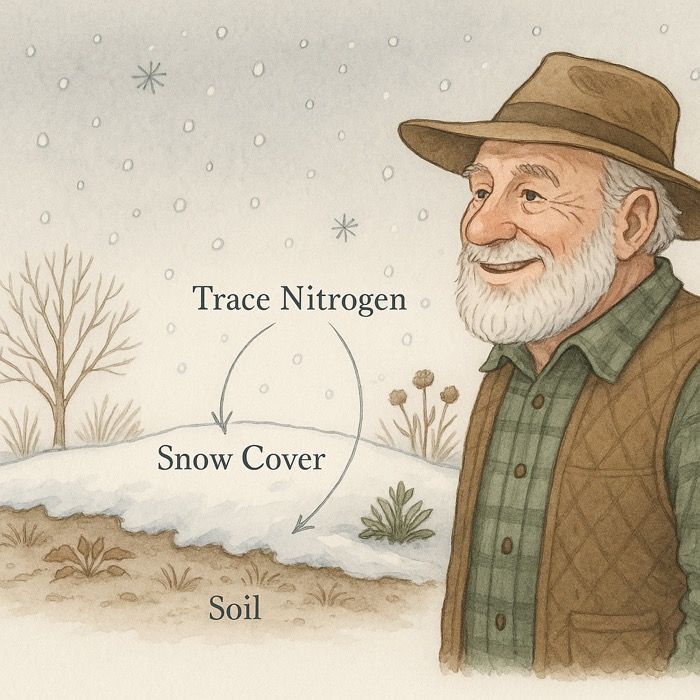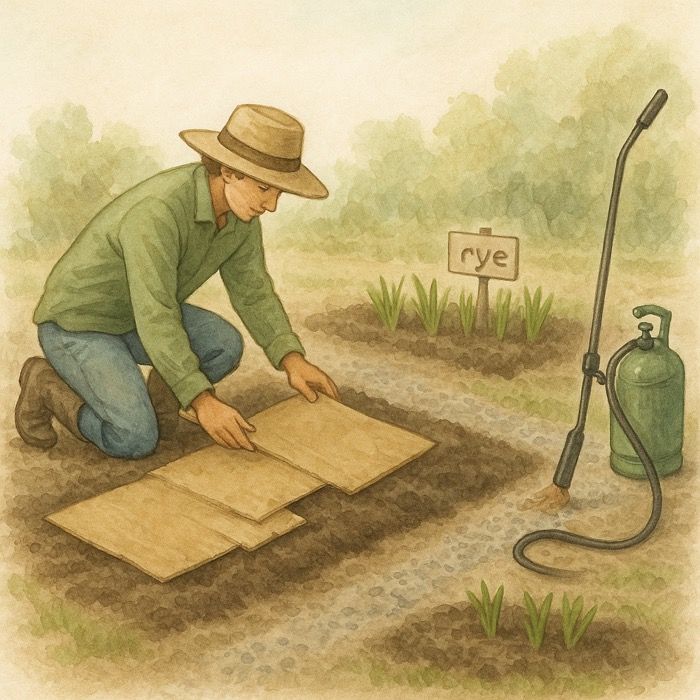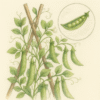Use of Perennial Plants: How to Apply the Best of Permaculture to Your Garden
Permaculture is often seen as a large-scale agricultural system, but gardeners can easily adapt its core principles to create more productive, low-maintenance, and sustainable gardens. One of the most powerful aspects of permaculture is the emphasis on perennial plants—vegetables, fruits, and food forests that provide long-term benefits. By incorporating perennial plants into your gardening routine, you can reduce the need for replanting, create healthier ecosystems, and ultimately enjoy more productive harvests. Let’s explore how you can take the best pieces of the permaculture mindset and apply them to your garden by using perennial plants.
Perennial Vegetables and Fruits – A Long-Term Investment for Any Gardener
Growing perennial vegetables and fruits is a smart way to combine the principles of permaculture with the practical needs of a home gardener. These plants return year after year, providing both food and ecological benefits with less labor than traditional annual crops.
Benefits of Perennial Vegetables and Fruits –
- Low Maintenance – Once established, perennial vegetables and fruits come back season after season, meaning less effort for planting and replanting each year. This reduces labor and lets you focus on other garden tasks.
- Soil Health – Perennials have deep root systems that help improve soil structure, reduce erosion, and draw nutrients from deep within the soil. This creates healthier soil over time and benefits other plants around them.
- Long-term Productivity – Plants like asparagus, rhubarb, and berry bushes can continue to produce for many years, ensuring a consistent harvest with minimal intervention. This is ideal for gardeners who want reliable yields without the need to start over each year.
- Ecological Stability – Perennials contribute to a stable ecosystem by providing food and shelter for beneficial insects, birds, and other wildlife. This helps maintain a healthy balance in your garden and reduces the likelihood of pests becoming a problem.
Top Perennial Vegetables and Fruits to Grow –
- Asparagus – This long-lasting perennial produces tender, edible spears each spring and can thrive for up to 20 years in a well-tended garden. It requires full sun and well-drained soil for best results.
- Rhubarb – Known for its tart flavor, rhubarb is a perennial favorite that can live for 10 to 15 years. It’s a great low-maintenance plant that thrives in cooler climates.
- Berry Bushes – Berries like blueberries, raspberries, and blackberries are incredibly productive perennials. They produce delicious fruit for decades with minimal care and regular pruning.
- Artichokes – Globe artichokes are a hardy perennial that can produce for up to 5 years in the right conditions. They prefer mild climates and well-drained soil but require some winter protection in colder zones.
- Strawberries – Strawberries, while not technically perennial in all regions, can live for several years in temperate climates. They spread through runners, creating new plants and ensuring continued harvests.
Master Gardener Tip: Use Companion Plants to Enhance Perennial Performance. A little-known trick among experienced gardeners is to pair your perennials with companion plants that help improve growth and reduce the need for maintenance. For example, planting comfrey near your fruit trees or berry bushes can significantly boost soil fertility. Comfrey’s deep taproots draw nutrients from the subsoil, and as its leaves decompose, they release these nutrients back into the soil, acting like a natural fertilizer for surrounding plants.
Master Gardener Steve
Additionally, growing nitrogen-fixing plants like clover or vetch around perennial vegetables can help boost soil nitrogen levels, reducing or eliminating the need for synthetic fertilizers. This kind of companion planting is a simple but effective permaculture principle that can be easily applied to any home garden.
How to Care for Perennial Vegetables and Fruits –
- Mulching – Apply mulch around perennials to retain moisture, suppress weeds, and protect the root system. Organic mulch like straw, compost, or wood chips works well.
- Pruning – While most perennials require little pruning, berry bushes and some fruit trees will benefit from regular trimming to promote airflow and remove dead or damaged branches.
- Feeding – While they don’t require as much feeding as annual crops, perennials still benefit from occasional fertilization. Apply compost or organic fertilizer in early spring to support healthy growth.
By growing perennial vegetables and fruits, you’re not only reducing the workload each year, but you’re also building a stronger, healthier garden over time. These plants contribute to the long-term stability and productivity of your space—key tenets of permaculture.
Food Forests – Permaculture’s Ultimate Garden Concept, Simplified for Gardeners
In permaculture, food forests are one of the most powerful concepts for creating a self-sustaining landscape. A food forest mimics the layers of a natural forest to produce food while improving soil health and fostering biodiversity. While permaculture food forests are often seen on larger scales, home gardeners can adapt this idea to suit their own space.
Key Principles of a Food Forest –
- Layers of Plants – A food forest uses multiple layers to maximize space and productivity. By mimicking nature, you can create a diverse garden that works efficiently with minimal input:
- Canopy Layer – Large fruit and nut trees like apples or chestnuts that provide shade and fruit.
- Sub-canopy Layer – Smaller fruit trees like dwarf pears or hazelnuts that thrive beneath the larger trees.
- Shrub Layer – Berry bushes like blueberries and raspberries that grow well under the tree canopy.
- Herbaceous Layer – Perennial herbs and vegetables like rhubarb, comfrey, and asparagus that fill out the ground space.
- Ground Cover Layer – Plants like strawberries, thyme, or clover that prevent weeds and improve soil quality.
- Root Layer – Root crops like garlic and onions that grow underground and help aerate the soil.
- Self-Sustaining System – In a food forest, each plant serves multiple purposes. Nitrogen-fixing plants like clover enrich the soil, while flowering plants attract pollinators and beneficial insects, creating a balanced system.
- Soil Health – A food forest builds soil health over time. The leaves that fall from the trees decompose and create organic matter, feeding the soil and supporting plant growth. Deep-rooted plants bring nutrients up from lower soil layers, making them available for other plants.
Benefits of a Food Forest for Gardeners –
- Diverse Harvests – A well-designed food forest provides a wide variety of fruits, nuts, vegetables, and herbs throughout the year. This diversity reduces the risks of crop failure and increases food security for home gardeners.
- Low Maintenance – Once established, a food forest largely takes care of itself. The plants create natural mulch and compost, reducing the need for watering, weeding, and fertilizing.
- Resilience – A diverse ecosystem is more resilient to pests and diseases. By incorporating plants that attract beneficial insects and pollinators, you can reduce the need for chemical pesticides and create a healthier garden overall.
How to Start a Food Forest in Your Garden –
- Observe and Plan – Start by observing your garden site. Take note of where the sun hits, how water flows, and the quality of your soil. Design your food forest to match these conditions.
- Plant in Layers – Begin by planting trees, followed by shrubs, and then fill in with herbaceous plants, ground covers, and root crops. Each layer should complement the others to create a diverse and balanced ecosystem.
- Focus on Soil Health – Use compost and mulch to build healthy soil from the start. Over time, your plants will contribute to this process naturally, but getting the soil in good shape will help your food forest thrive from the beginning.
- Be Patient – Like any perennial system, a food forest takes time to mature. While you may not see significant yields in the first few years, the system will become more productive as the plants establish themselves and the soil improves.
Conclusion – Adapting Permaculture Principles for a Thriving Garden
By adopting the best pieces of the permaculture mindset—such as growing perennial vegetables, fruits, and incorporating food forest principles—you can create a garden that is not only productive but also sustainable. These strategies reduce the amount of maintenance required while increasing long-term yields, making them perfect for any gardener looking to improve their space. Perennials work in harmony with nature, building soil health, fostering biodiversity, and providing consistent harvests year after year.
Whether you’re growing asparagus and berry bushes or experimenting with your own mini food forest, the use of perennial plants is one of the most effective ways to take your gardening to the next level. Embrace these strategies, and watch your garden thrive!
More From Our Master Gardener
Recent Posts

❄️ Snow as Fertilizer – The Truth About “Poor Man’s Nitrogen”

5 Unexpected Winter Weed Control Strategies (That Don’t Involve Mulch)

Harnessing Winter Sun – Passive Solar Tricks for Your Garden

How to Grow Spinach – The Ultimate Beginner’s Guide for Tender, Nutritious Leaves

How to Grow Peas: The Ultimate Beginner’s Guide for Sweet, Crisp Harvests















